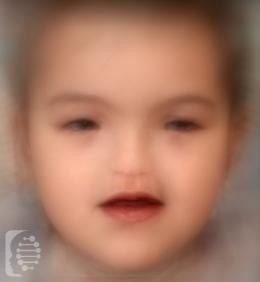What is Bosma Arhinia Microphthalmia syndrome?
Bosma Arhinia Microphthalmia syndrome is a rare genetic condition currently diagnosed in less than 100 individuals worldwide.
The dominant features of this syndrome affect mainly the nose and ears of affected individuals.
It also can affect and delay the puberty of individuals with the condition.
This syndrome is also known as:
Arhinia, Choanal Atresia, Microphthalmia, and Hypogonadotropic Hypogonadism.
What gene change causes Bosma Arhinia Microphthalmia syndrome?
Mutations to the SMCHD1 gene are responsible for the syndrome. It is inherited in an autosomal dominant pattern.
In the case of autosomal dominant inheritance, just one parent is the carrier of the gene mutation, and they have a 50% chance of passing it onto each of their children. Syndromes inherited in an autosomal dominant inheritance are caused by just one copy of the gene mutation.
What are the main symptoms of Bosma Arhinia Microphthalmia syndrome?
One of the main symptoms of the condition is arhinia, which is the absence of an external nose. Individuals may be born with no nose or a very underdeveloped one. Individuals may also be affected by an absence of sinuses from behind the nose.
The syndrome also affects how the brain develops in regards to the olfactory bulb which provides our sense of smell. Individuals may have an underdeveloped or lacking sense of smell and taste.
Symptoms related to the eyes include very small or absent eyeballs which can lead to problems with vision and blindness. Cataracts are common in individuals with the syndrome.
A cleft or very high-arched palate is also a common feature of the syndrome.
Individuals may also experience delayed puberty.
Possible clinical traits/features:
Malar flattening, Cryptorchidism, Abnormality of the sense of smell, Aplasia/Hypoplasia affecting the eye, Aplasia of the nose, Aplasia/Hypoplasia of the abdominal wall musculature, Aplasia/Hypoplasia involving the nose, Absent nares, Cataract, Choanal atresia, Cleft palate, Lacrimation abnormality, Microphthalmia, Iris coloboma, Visual impairment, Hyposmia, Hypertelorism, Gynecomastia, Hypoplasia of penis, Hypogonadism, Hernia of the abdominal wall, Reduced number of teeth.
How is it diagnosed?
To find out if someone has a diagnosis of Bosma Arhinia Microphthalmia syndrome, it is important to have a consultation and evaluation with a clinical genetic specialist. Specialists may also suggest specific genetic testing or other types of tests to help reach a diagnosis. FDNA’s AI technology can help speed up the diagnostic process by analyzing facial features and other health information.

